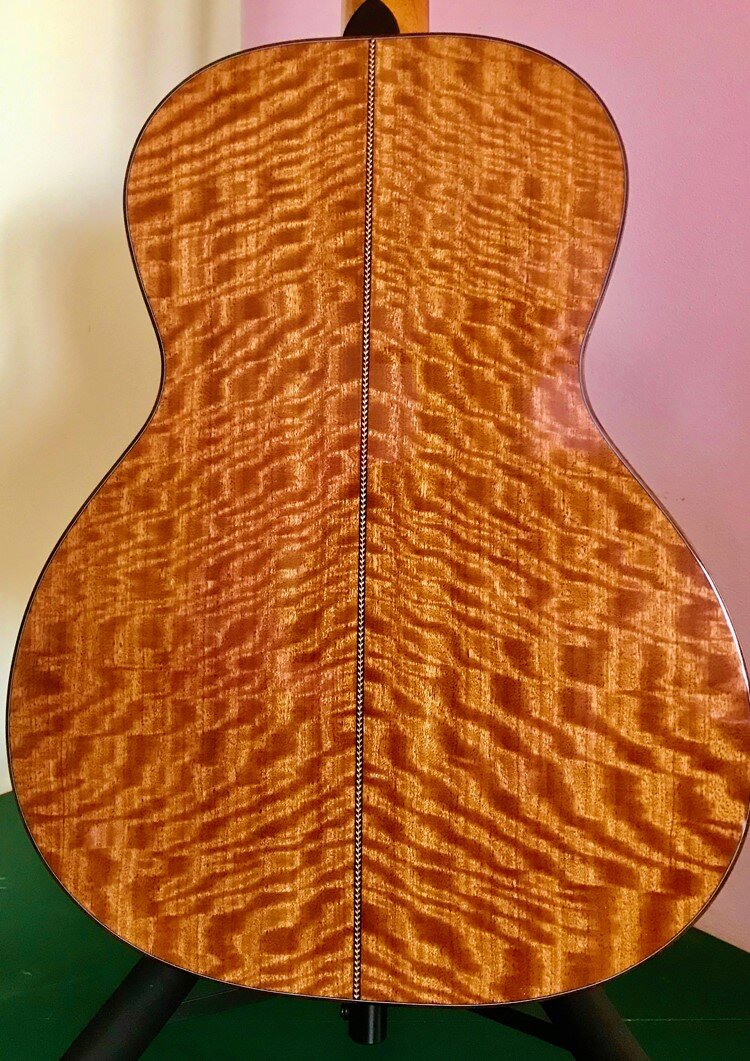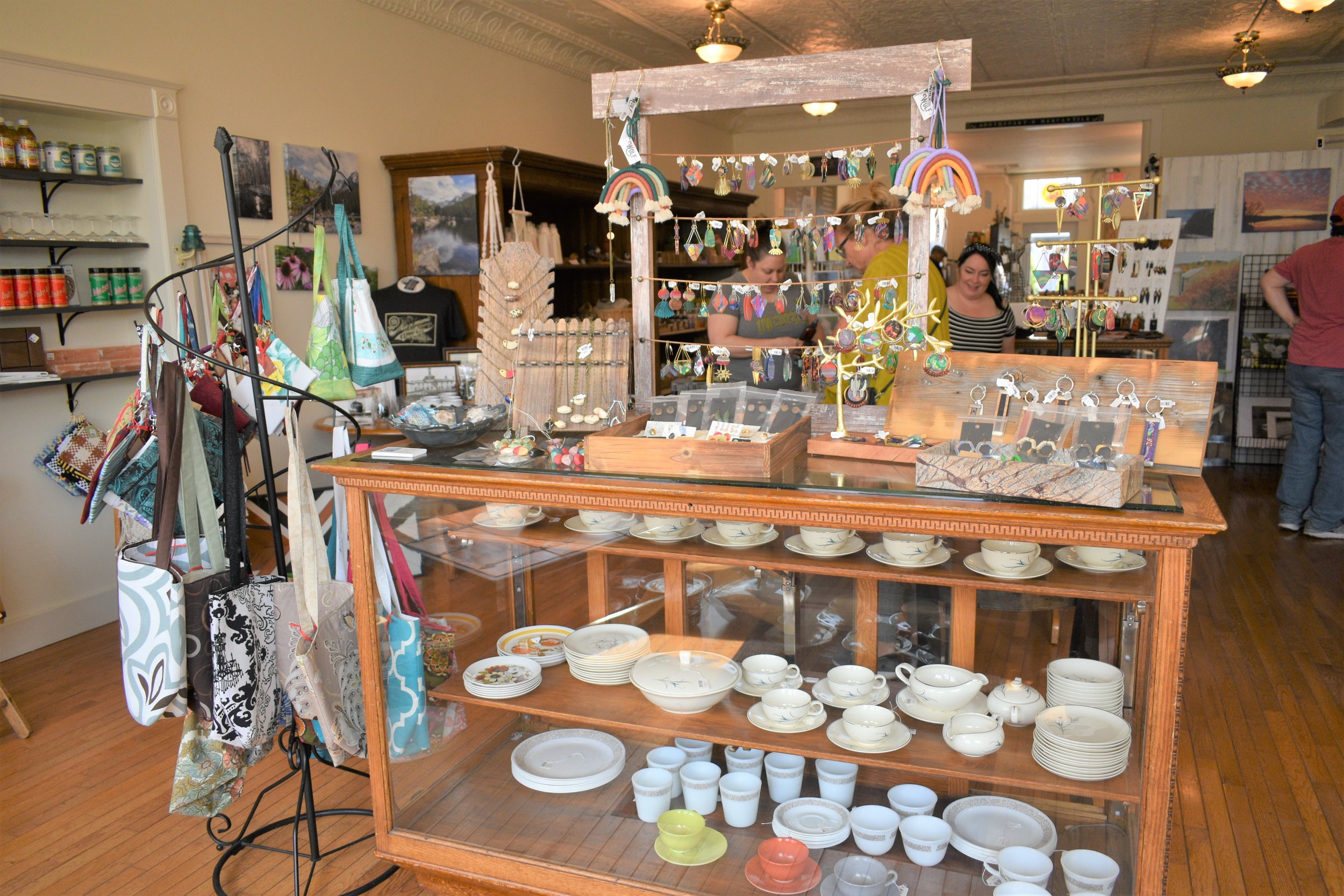Rocky Road Guitars: Hand built instruments with soul
In a cozy workshop nestled in the hills of the Driftless Region outside of Dodgeville, guitar builder David Riedmiller is producing hand built instruments of exceptional quality. His guitar brand is Rocky Road, with the name reflecting the long and sometimes challenging journey a guitar builder makes as he follows a detailed production process that encompasses as many as 300 steps from start to finish.
The name also reflects the unorthodox path Riedmiller has taken to becoming a high quality guitar builder. Working for many decades as a finish carpenter and a builder of exceptional staircases, he caught the guitar building bug several years ago while working with a fellow carpenter, Dennis O’Brien, who was putting his knowledge of woods and woodworking to use building guitars as a hobby.
Dennis encouraged David, who had been a guitar player since his teens, to try his hand at building an instrument and showed him enough of the fundamentals to get him started. “That first guitar sat around in an incomplete state for many years. Real life took precedence. I needed to provide for my family and did not have much time to devote to guitar building. But the idea of building guitars never left me.”
After retiring from the finish carpentry trade, Riedmiller refocused his attention on guitar building. “I’d been a woodworker for more that 40 years, so I had the ability, but my goal was to build something better that a good sounding guitar. I wanted to produce great sounding, playing and looking guitars. It is like a three-legged stool, each leg is important, and if any one is missing the stool is useless.”
Several years ago, Riedmiller attended a course for guitar builders at Ann Arbor Guitars in Michigan led by David Collins. “This class was a real turning point. Learning how to properly set frets and craft the top nut and bridge saddle has a huge impact on how a guitar plays and how it sounds,” he said.
With O’Brien’s initial encouragement, the class in Ann Arbor, and by following the detailed process outlined in a guitar builder’s manual written many years ago by William Cumpiano, Riedmiller has made the transition from finish carpenter to guitar builder in a relatively short time.
Each Rocky Road guitar takes 6 to 12 weeks to complete, with the most common time being 8-10 weeks. The actual build takes less time, but finishing the guitar in nitrocellulose lacquer and allowing the finish to properly cure cannot be rushed.
Guitars come out of the Rocky Road workshop in a variety of sizes and shapes, ranging from small bodied short scale “parlor” models to very large models similar and size and shape to the well-known Super Jumbo types. In between these two ends of the size spectrum are OO and OM sized instruments, the ever-popular Dreadnaughts (slope shouldered and square shouldered) and a Small Jumbo Guitar (with an upper bout cutaway option.)
For the tops of his instruments, Riedmiller uses a variety of woods, mostly from various species of spruce: Adirondack, Sitka, Lutz, Engelmann, and several European types. Tops of cedar, redwood or other exotic species are other options. For the sides and backs, he uses varieties of rosewood, sapele (a dense variety of mahogany) and from North American forests, maple and walnut. Some of the wood is figured with spectacular patterns, making the instruments beautiful to the eye as well as to the ears of players and audiences. For ornamentation, other solid woods, abalone and fiber are put to good use on bindings, purfling and around sound holes.
Having a face-to-face session between the builder and the player is how the custom build process gets started. “I have found that each player has a particular guitar voice or sound that they are drawn to. Playing a guitar is an experience of both the instrument’s sound and the player’s ability to easily move their fingers along the fret board. I consider the guitar to be the musician’s tool. A well-made tool should easily integrate into a player’s hands, with the guitar providing an actual connection between the player’s mind and body,” Riedmiller explained. “I ask anyone interested in having me build a guitar for them to bring in their current favorite guitar with the sound they like most and to demonstrate their playing style or styles. I also hand them several of my guitars to see what they like the most. This process provides a basis for the selection of woods, body shape and size, and scale length for their custom guitar.”
Admittedly, a hand built guitar is more expensive than a guitar produced on an assembly line in an overseas factory. Rocky Road guitars start in the $2,000 range. Asked about the justification for the difference in price between custom hand-built guitars and mass-produced instruments, Riedmiller responded, “There is a huge difference between a factory-made instrument and a hand built one. I am responsible for how well I accomplish each step in the building process. Hand building allows me to give intimate attention to the ‘voicing’ of the guitar top. A guitar built by a single builder has a ‘soul’ if you will. It is reflection of the maker’s ability and experience. In the hands of a skillful player, the souls of the guitar and the player team up to produce beautiful music.”
Riedmiller is part of a growing number of builders in small workshops building one instrument at a time. “I think this trend is part of the retreat from mass production and automation where workers may lose all sense of personal satisfaction. Building a guitar or anything else with your own hands can be a much more rewarding experience.”
Players interested in trying out in stock guitars or ordering a Rocky Road guitar to their personal specifications can contact David Riedmiller through the Rocky Road Guitar website www.rockyroadguitar.com.
Photos by Don Greenwood
Author note:
Don Greenwood is a retired journalist and grant writer from Spring Green, WI. He has been a guitar player for more than 50 years and now plays Rocky Road guitars. He says, “These guitars are some of the finest instruments it has ever been my pleasure to play and listen to. On top of that, they are beautiful to look at.”








